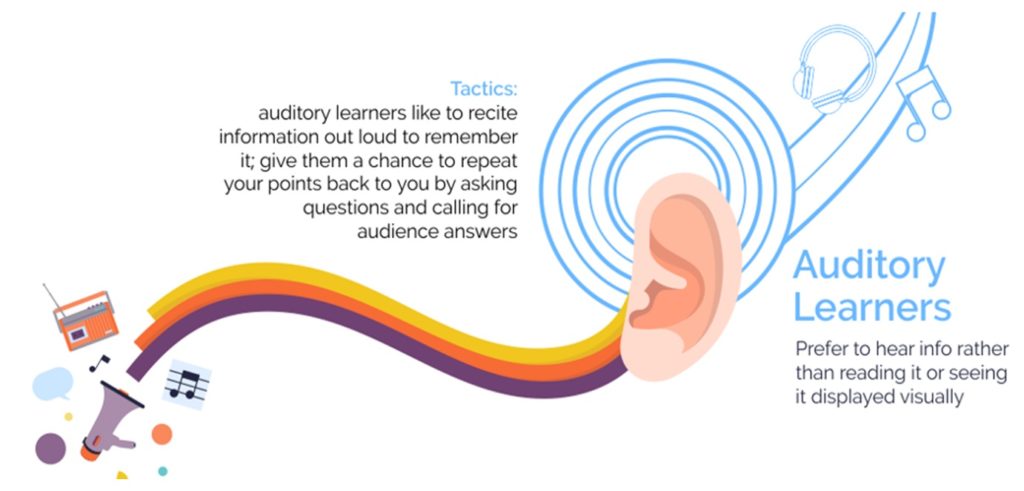

They wiggle, tap, swing their legs, bounce, and often just can’t seem to sit still. Kinesthetic and tactile learners have similar learning styles 1. SnapWords® have helped thousands of kinesthetic readers thrive! The more we understand our students’ learning strengths, the sooner we will be able to accommodate those needs and the more our students will soar. Reality is that children, like their adult counterparts, are not all the same in how they learn. Very often, the children who can’t succeed in these classrooms are labelled ADD or ADHD. When you consider a child’s learning style, kinesthetic learners (who require movement to learn) or tactile learners (who require hands-on learning), traditional classroom environments can be the biggest obstacle to learning. We ask them to be quiet, stop moving, and concentrate.
AUDITORY LEARNING STYLE CLIPART FULL
We put them in colorful rooms full of visual stimuli, packed with their friends. We treat all learners the same way, without regard to the different ways in which they take in and process new information. Insights, tips, and techniques to help kinesthetic learners at school and at homeĪdults have the luxury of understanding and accommodating how they take in new information and what helps them remember.

By design, Sarah's materials incorporate stimulating visuals with related body movements, providing a solid foundation for all students, including kinesthetic and tactile learners. As a Title 1 Program Director and Designer, Sarah earned awards for creating her own multisensory educational resources that have now been sold in all 50 states and over 150 countries. is passionate about working in harmony with a child's immaculate design to support their learning strengths. ask for the student to talk to you regularly about what they are learning.Sarah Major, M.Ed.give them lots of individual attention and instruction.allow times when the classroom is silent then times with quiet music.explain information through songs, raps and poems.encourage students to explain topics to each other.use technology with sound, music or speech, such as computers, CDs, videos or musical instruments.sit where you can hear the teacher well.repeat information with your eyes closed.If you are an auditory learner, study works best if you: If you recognise these traits in your children, or the children you are working with, you can help them to learn these strategies too. Recognising if you are an auditory learner is a great starting point. Learning strategies for auditory learners remembering conversations, music and lyrics.detecting changes in speech, tone and emotions.They may be slow readers and find it hard to understand graphs and diagrams or read maps.Īuditory learners often work in areas such as writing, journalism, teaching, law, languages and speech pathology. They often play musical instruments and sing or hum to themselves when busy. When listening, they often look distracted, and like they are listening to their thoughts, with their eyes looking down to the right. Noise and music is very distracting and they don’t benefit as much as other learners from pictures or practical activities. They may talk a lot and interrupt others. They often memorise best by hearing and speaking out loud. Only 30% of school students are auditory learners. Traits of auditory learnersĪuditory learners understand information best when they are given verbal instructions. The second way the brain can process information is by listening. In this series, we are exploring different learning styles.


 0 kommentar(er)
0 kommentar(er)
